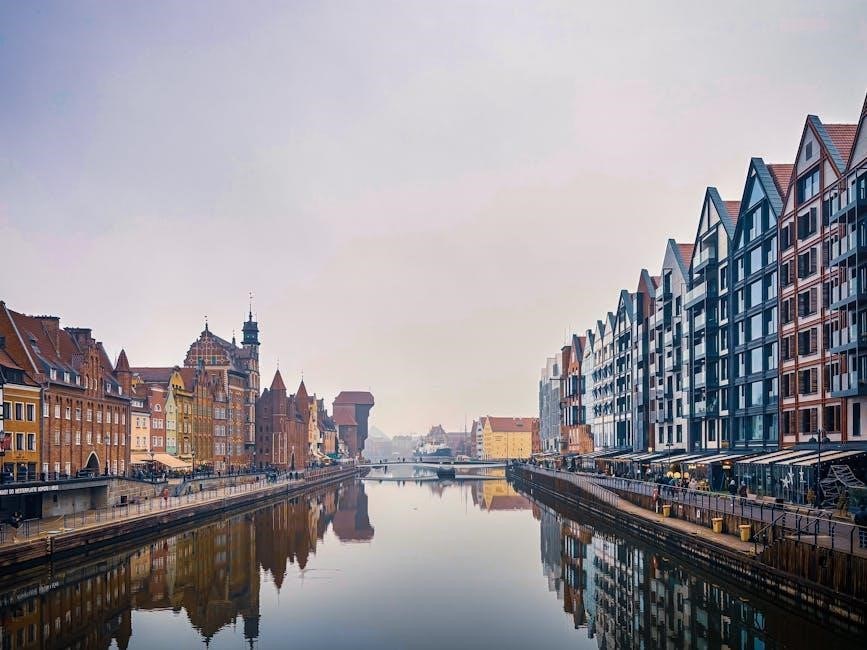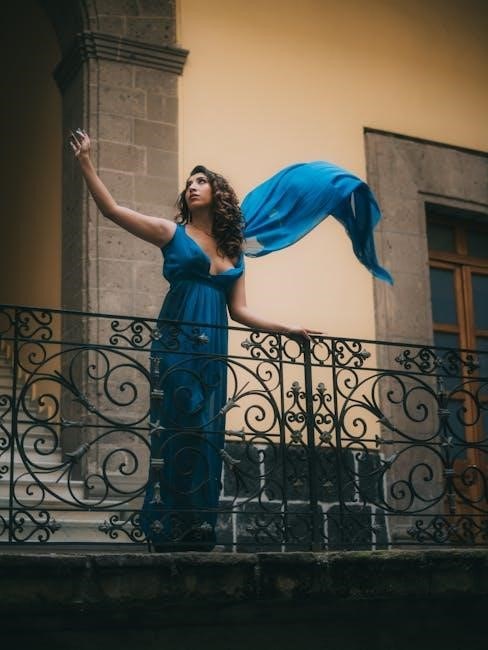Moquegua, a region in southern Peru, holds a rich historical legacy shaped by pre-Inca cultures and Spanish colonial influence. Its strategic location facilitated trade and cultural exchange.
The “Retazos de la Historia de Moquegua” PDF provides a detailed account of its history, from early civilizations like Tiahuanaco to its colonial transformation, highlighting its cultural and economic significance.
Overview of Moquegua’s Location and Historical Significance
Moquegua, located in southern Peru, is divided into three provinces: Mariscal Nieto, General Sánchez Cerro, and Ilo. Its strategic position has historically facilitated trade and cultural exchange. The region’s history is deeply intertwined with the Andean highlands, influenced by pre-Inca cultures like Tiahuanaco and later the Inca Empire. The Spanish colonial period brought significant changes, shaping its urban and agricultural development. The 1600 earthquake marked a turning point, altering its trajectory. Today, Moquegua is a hub for copper production and agriculture, blending ancient traditions with modern economic activities.

Pre-Inca Period
The pre-Inca period in Moquegua was marked by the influence of the Tiahuanaco culture and the Uros people, who settled in the region, contributing to its early development.
The Tiahuanaco Culture in Moquegua
The Tiahuanaco culture significantly influenced Moquegua during the Early Horizon period, shaping its architecture, art, and religious practices. Archaeological findings reveal their presence through ceramics, textiles, and monumental structures.
This culture’s impact extended beyond aesthetics, fostering regional integration and trade networks. However, by 1000 AD, Tiahuanaco’s influence waned, leading to Moquegua’s transition toward new cultural identities.
Evidence of their legacy remains in the region’s historical fabric, showcasing their enduring contribution to Moquegua’s pre-Inca heritage.
The Uros People and Their Settlement in the Region
The Uros people were early settlers in Moquegua, establishing communities near Lake Titicaca. Their presence dates back to pre-Inca times, with archaeological evidence showing their expertise in fishing and agriculture.
They developed unique traditions and social structures, adapting to the region’s climate and geography. Their settlements played a crucial role in Moquegua’s early cultural development, blending seamlessly with the Tiahuanaco influence.
The Uros’ legacy is still visible in the region’s cultural practices, making them a vital part of Moquegua’s historical tapestry.
Colonial Era
Moquegua was founded in the 16th century as Santa Catalina de Guadalcázar del Valle de Moquegua, marking the beginning of Spanish influence in the region.
Spanish Foundation and Early History
Moquegua was founded in the 16th century by Spanish conquistadors, who established it as Santa Catalina de Guadalcázar del Valle de Moquegua in 1541. The region became a vital hub for agriculture and mining, with the Spanish introducing new crops and administrative systems. Early colonial history highlights the blending of indigenous and European traditions, shaping Moquegua’s cultural identity. The Spanish foundation laid the groundwork for its economic and social development, making it a significant colonial outpost in southern Peru.
The 1600 Earthquake and Its Impact
In 1600, a devastating earthquake struck Moquegua, causing widespread destruction and altering the region’s history. This seismic event, occurring on February 19, led to significant changes in the area’s infrastructure and social dynamics. The earthquake’s impact extended beyond Peru, affecting global historical contexts, including Russia and Europe. It marked a turning point for Moquegua, reshaping its colonial development and leaving a lasting legacy in its history. The disaster prompted rebuilding efforts, reinforcing the region’s resilience and adaptability in the face of natural challenges.

Cultural Interactions and Development
Moquegua’s cultural richness stems from the blending of indigenous traditions and Spanish influence. The Contisuyo culture flourished, leaving a legacy in art and traditions. Museo Contisuyo preserves this heritage.
The Contisuyo Culture and Its Influence
The Contisuyo culture significantly shaped Moquegua’s identity. Originating in the Andean highlands, it influenced regional art, textiles, and traditions. Its craftsmanship, particularly in ceramics and metallurgy, reflects a rich cultural heritage. The Contisuyo people’s interaction with other pre-Columbian civilizations, like the Tiahuanaco, further enriched their artistic and social practices. This cultural blend is evident in Moquegua’s historical sites and artifacts, showcasing a dynamic and adaptive society. The legacy of Contisuyo continues to inspire local creativity, preserving its historical importance in the region.
Museo Contisuyo: A Cultural and Historical Hub
Museo Contisuyo stands as a cornerstone of Moquegua’s cultural heritage, offering a glimpse into its ancestral past. Housing archaeological artifacts and recreative models, the museum showcases the region’s historical evolution. Exhibits highlight the Contisuyo culture’s influence, traditional textiles, and the significance of copper craftsmanship. Visitors can explore Moquegua’s identity through these displays, making the museum a vital hub for understanding its rich history and artistic traditions. It serves as both an educational archive and a celebration of the region’s enduring legacy.
Religious and Social Aspects
Santa Fortunata’s martyrdom symbolizes Moquegua’s deep religious devotion, cultural identity, and enduring spiritual strength, making her a revered figure in the region’s faith and history.
Santa Fortunata: Martyrdom and Symbolism

Santa Fortunata, a young martyr from Moquegua, is revered for her unwavering faith and sacrifice at just 17 years old. Her story embodies resilience and spiritual strength.
Locals honor her legacy through religious festivals and traditions, celebrating her as a symbol of hope and devotion, deeply rooted in the region’s cultural identity.
Her martyrdom has become a powerful narrative, inspiring generations and reinforcing Moquegua’s rich spiritual heritage.
Economic Contributions
Moquegua’s economy thrives on mining, particularly copper production, and agriculture, with the Damasco fruit being a notable export. These industries drive regional growth and employment.
Agriculture and the Damasco Fruit
Agriculture is a cornerstone of Moquegua’s economy, with the Damasco fruit being a standout product. Cultivated since the Inca Empire, this fruit thrives in the region’s fertile valleys. Its sweet flavor and versatility make it a staple in local markets and exports. The Damasco fruit symbolizes Moquegua’s agricultural richness and historical ties to its land. Its cultivation supports local livelihoods and contributes to the region’s economic growth, showcasing Moquegua’s enduring legacy as an agricultural hub.
Mining and Copper Production
Mining is a vital component of Moquegua’s economy, particularly copper production. The region is Peru’s top copper producer, hosting significant mining projects. Copper extraction has historically driven economic growth and industrial development. The sector attracts investment and provides employment, shaping Moquegua’s modern identity. Its mines are integral to both local and national economies, ensuring the region’s prominence in the global mining industry while fostering technological advancements and sustainable practices to protect its environment.

Traditional Cuisine
Moquegua’s cuisine blends coastal and Andean flavors, featuring dishes like chicharrón de pescado and fresh seafood. Local ingredients and traditional recipes highlight its cultural richness.
Emblematic Dishes of Moquegua
Moquegua’s cuisine is a vibrant fusion of coastal and Andean flavors. Emblematic dishes include chicharrón de pescado, made with crispy fried fish, and arroz con mariscos, a seafood rice dish.
Local specialties like suspiro de limeña and picarones (sweet potato donuts) reflect the region’s rich cultural heritage. These dishes, often prepared with centuries-old recipes, showcase Moquegua’s culinary diversity and historical roots.
The use of fresh seafood, combined with traditional ingredients, highlights the region’s unique gastronomic identity, making its cuisine a cherished part of Peruvian culture.
The Role of Local Ingredients
Local ingredients play a vital role in shaping Moquegua’s culinary identity. Fresh seafood, such as fish and shellfish, is abundant due to its coastal location. The damasco fruit, cultivated since Inca times, is a staple in both sweet and savory dishes. Traditional crops like quinoa, potatoes, and corn are also central to regional recipes. These ingredients, combined with Andean spices and herbs, create a unique flavor profile that reflects Moquegua’s cultural heritage and its connection to the land. They are celebrated in both everyday meals and festive cuisine, preserving the region’s gastronomic traditions.

Historical Documentation
The Retazos de la Historia de Moquegua PDF provides a comprehensive account of the region’s history, from pre-Inca times to the 20th century, serving as an essential historical resource.

“Retazos de la Historia de Moquegua” PDF
This historical document, authored by Luis E. Kuong Cabello, provides an in-depth exploration of Moquegua’s history, spanning from pre-Inca times to the 20th century. It delves into the region’s cultural evolution, highlighting the influence of indigenous groups like the Tiahuanaco and Uros. The PDF also covers significant events, such as the Spanish foundation and the devastating 1600 earthquake. As a valuable resource, it offers insights into Moquegua’s economic and social development, making it a cornerstone for understanding the region’s rich historical journey and cultural legacy.
Moquegua’s history reflects a rich blend of indigenous and Spanish influences, shaped by resilience and cultural exchange, leaving a lasting legacy in Peru’s southern region.
Moquegua’s history is a testament to resilience and cultural diversity, from the Tiahuanaco and Uros influences to the Spanish colonial era and its modern-day significance. The region’s strategic location facilitated trade and cultural exchange, shaping its unique identity. Key events, such as the 1600 earthquake, and figures like Santa Fortunata, highlight its transformative journey. The “Retazos de la Historia de Moquegua” PDF offers insights into this journey, showcasing its archaeological richness and historical contributions to Peru’s heritage.

